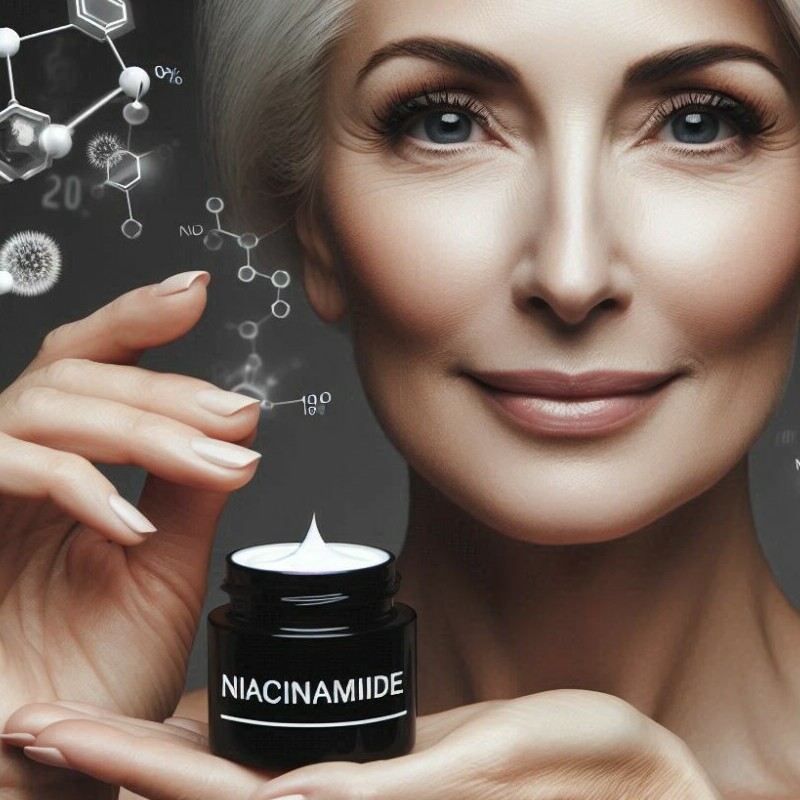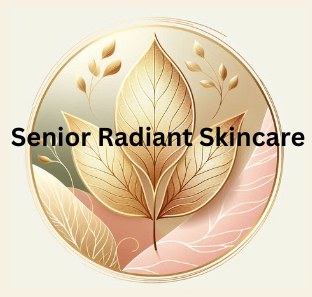
Niacinamide, often overshadowed by other flashy ingredients in the skincare aisle, is a standout substance that deserves a place in your routine, especially if you’re a senior. It’s a form of vitamin B3, a staple for maintaining healthy cells, and when it comes to skin, it’s a true unsung hero. In this introduction, I’m going to highlight how this powerhouse ingredient can be a game-changer for your complexion as you age.
Why should seniors pay extra attention to their skincare, you might ask? Well, as you notch more birthdays, your skin evolves. It becomes more delicate, loses elasticity, and the healing process slows down. Here’s where Niacinamide steps in. It’s not only gentle but also remarkably effective in addressing the typical issues that come with age, like dryness, fine lines, and a lackluster tone.
You’re about to find out about the well-documented pluses of Niacinamide: bolstered skin defense, boosted hydration, and improved skin texture. It doesn’t stop there. This ingredient is also linked to balancing tone and aiding in reducing hyperpigmentation, which can be particularly bothersome for seniors who’ve amassed sun exposure over the years.
That’s just the tip of the iceberg. Don’t worry too much about becoming a skincare expert overnight. You’re starting with an advantage by choosing something that resonates with a wealth of scientific backing and a track record of success. So, you’re primed for the next part of our journey: understanding how Niacinamide specifically tackles the unique challenges of aging skin. And frankly, I find the way it syncs with your skin’s natural processes pretty wild.
Understanding Niacinamide’s Role in Aging Skin
Now, you might be curious about what exactly happens to your skin as you clock those golden years. Age brings wisdom, but it isn’t shy about leaving its mark on our skin. Collagen production slows, elasticity wanes and all those years of sun exposure start to show.
Navigating this transformation, niacinamide is nothing less than a skincare hero for seniors. It slips into the role of a nurturing guardian, reinforcing your skin’s barrier. That’s your frontline defense against environmental assailants who are ever so eager to leave a trace.
But niacinamide doesn’t stop there. It’s a multitasker. Collagen, our skin’s structural support, tends to throw in the towel as we age, leading to fine lines and wrinkles that love to overstay their welcome. Our trusty niacinamide steps in to motivate collagen production, helping to iron out those wrinkles and restore some of that youthful resilience.
All this isn’t just my hopeful thinking. Clinical studies back up these claims, showing significant improvements in skin texture and elasticity among mature skin profiles. And it doesn’t play favorites; niacinamide shows results across various skin types.
So as we look to fold niacinamide into your skincare ensemble, remember it’s about harmonizing your routine with what your skin needs at this stage of life. You’ll want to take note of how to best introduce niacinamide and what to pair it with for a standing ovation from your skin cells.
Incorporating Niacinamide into a Senior Skincare Routine
Think of your skincare routine as a tailor-made suit: it needs to fit your skin’s evolving needs, especially as you age. Niacinamide is one versatile ingredient you’ll want in the mix. I’m going to show you how to slip this powerhouse into your daily regimen effortlessly.
Start with a mild cleanser to prepare your skin – this step is crucial. Your skin becomes more delicate in your senior years, so being gentle is key. After patting your face dry, apply a Niacinamide serum or cream. You don’t need a lot; a pea-sized amount should do the trick.
Now, here’s the real kicker: Niacinamide plays well with others, meaning you can pair it with hydrating ingredients like hyaluronic acid or nourishing elements like ceramides. This teamwork can address dryness, a common issue for senior skin, and enhance the overall benefits.
When shopping for products, check for those specifically formulated for mature skin. Labels can be confusing, so focus on finding items with Niacinamide listed near the top of the ingredients list. And remember, apply sunscreen every day. Sun damage doesn’t discriminate by age, and Niacinamide can help protect your skin from UV rays.
I recommend starting with a lower concentration of Niacinamide and working your way up as your skin becomes accustomed to it. Most people tolerate it well, but as with any new product, monitor your skin’s response. If irritation occurs, don’t panic – it’s your skin’s way of saying ‘Give me a break.’ In that case, scale back or consult with a dermatologist.
Safety is always paramount. Luckily, Niacinamide is generally safe and well-tolerated by all skin types, including sensitive skin common in seniors. If you have pre-existing conditions or take medications that affect your skin, chat with a health professional first. They’re there to help you make informed choices about your skincare.
Advocating for Niacinamide
I’m here to help you sift through the chatter and focus on what the experts are saying. In my opinion, when dermatologists advocate for an ingredient, it’s worth listening. And guess what? They are advocating for niacinamide, especially for mature skin that needs gentle, yet effective care.
Choose something that resonates with you. That’s the strategy I like to leverage when deciding on skin care products. Daily use of niacinamide, as recommended by skin care pros, has helped many seniors maintain supple, more resilient skin.
Your first attempt doesn’t need to be your last. So, if you’re on the fence about trying niacinamide, remember this: you can always adjust your approach down the road. But for now, I really hope that the insights from seniors and specialists alike have painted a clearer picture for you.
